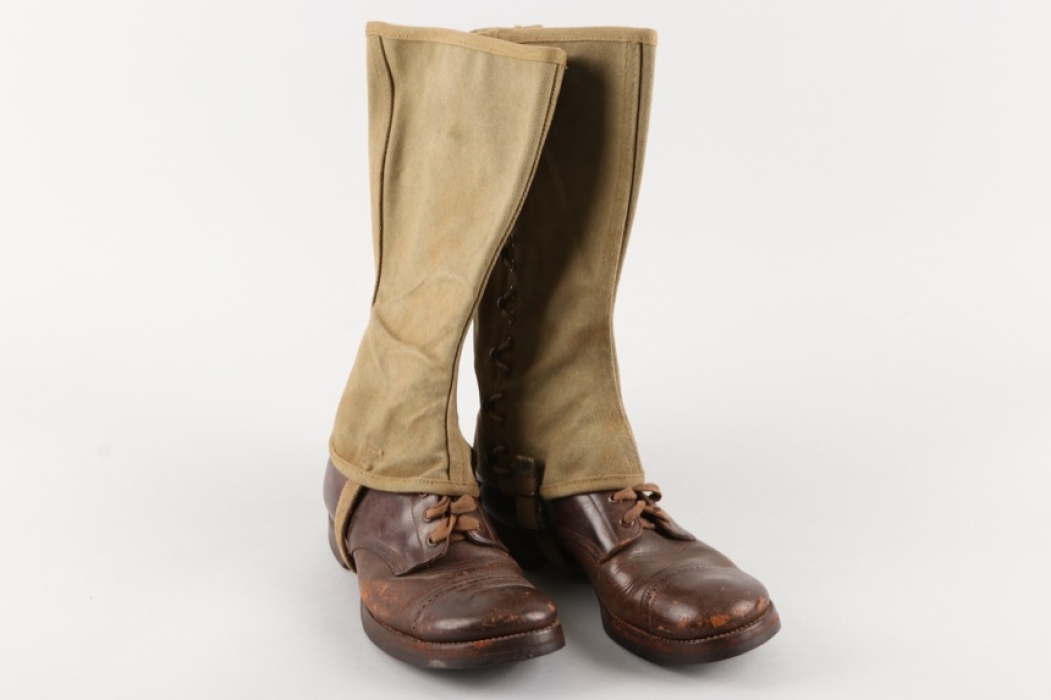Andere Uniformierung
Jetzt Lose für verringertes Aufgeld sichern

US Marine Corps Stiefel und Gamaschen
MILITARIA PREISDATENBANK
Wie kann ich Verkaufspreise sehen?
Melden Sie sich noch heute unter www.ratisbons.com/de/militaria-preisdatenbank für unsere MILITARIA PREISDATENBANK an! Bei Abschluss eines jährlichen Abonnements für nur 75€ sparen Sie 25%.
Ihr Zugang zu allen Verkaufspreisen, Bildern und Beschreibungen wird umgehend nach Abschluss Ihres Abonnements freigeschaltet.
We are buying single items and entire collections! Call +49 8541 9053699
-
Bezahlung
-
WIE KANN ICH FÜR MEINE BESTELLUNG BEZAHLEN?
AUKTIONAlle erfolgreichen Gebote werden automatisch zu einer einzigen Bestellung zusammengefasst. Für diese können Sie uns nach Auktionsende in Ihrem persönlichen Kundenkonto Ihre bevorzugte Bezahl- und Versandart oder eine alternative Lieferadresse mitteilen.
Wenn wir diese freiwilligen Angaben nicht von Ihnen erhalten melden wir uns automatisch im Laufe des Montags nach Auktionsende mit einer Zahlungsanweisung per Email. Basierend auf Erfahrungswerten schlagen wir Ihnen die bequemste Bezahlmehtode und die günstigste Versandart vor. Sie möchten Ihre Bezahl- und Versandart ändern oder eine alternative Lieferadresse angeben? Kein Problem! Besuchen Sie Kundenkonto/BESTELLUNGEN oder kontaktieren Sie uns per Email.
BESTELLUNGEN IM ONLINESHOPWählen Sie während der Bestellung Ihre bevorzugte Bezahl- und Versandart und schicken Sie diese ab. Sie erhalten Ihre Zahlungsanweisung spätestens am darauffolgenden Tag per Email. Die Zahlungsfrist beträgt sieben Tage. Sie planen eine Bestellung per Ratenzahlung zu begleichen? Bitte sprechen Sie uns gerne vor Ihrer Bestellung darauf an.
Für mehr Informationen zu Bezahlung und Versand, besuchen Sie unsere Häufigen Fragen.
WIR AKZEPTIEREN FOLGENDE BEZAHLARTEN
-
-
Versand
-
IHRE BESTELLUNG IN DEN BESTEN HÄNDEN
VERPACKUNG & SENDUNGSVERFOLGUNGNach Zahlungseingang versenden wir Ihre Bestellung für gewöhnlich am darauffolgenden Werktag. Wir bestätigen den Eingang Ihrer Zahlung per Email und informieren Sie zur Versandvorbereitung. Nach Abholung der Sendung durch unsere Versanddienstleister teilen wir Ihnen die Sendungsnummer per Email mit. Den Status Ihrer Sendung können Sie auch jederzeit unter Kundenkonto/BESTELLUNGEN einsehen. Ihre Rechnung geht Ihnen automatisch am Tag des Versands zu.
VERSAND ZU EINER ALTERNATIVEN ADRESSEBevorzugen Sie für eine Bestellung einen Versand zu Ihrer Arbeitsstelle? Sie sind im Urlaub und wünschen den Versand zu einer Packstation oder einem Freund? Kein Problem! Diese Änderungen können Sie jederzeit unter Kundenkonto/BESTELLUNGEN vornehmen. Alternativ können Sie natürlich jederzeit auch per Email informieren.
UNSERE PARTNER FÜR DEN VERSAND
-
-
Garantie
-
 GARANTIE!
GARANTIE!Alle angebotenen Artikel werden von unseren Experten akribisch auf deren Echtheit geprüft und detailiert beschrieben. Wir bieten ausschließen zeitgenössiche Originale an. Etwa 15% aller Kundeneinlieferungen ensprechen unseren Anforderungen nicht und werden retourniert.
Gekauft wie gesehen? Nicht bei uns. Im Gegensatz zu traditionellen Auktionshäusern bieten wir volles Rückgaberecht of Originalität an. Sollten Sie mit Ihrer Bestellung nicht zufrieden sein, können Sie die Bestellung innerhalb 14 Tagen widerrufen. Bitte kontaktieren Sie uns vor dem Rückversand. Für mehr Einzelheiten besuchen Sie bitte unsere häufigen Fragen.
In eigener Sache: Bieten Sie nur auf Lose, die Sie auch erwerben möchten. Bitte vermeiden Sie Gebote nach Auktionende zu stornieren. Sollten Sie ein fehlerhaftes Gebot abgegeben haben, informieren Sie uns bitte umgehend. Wir löschen Ihre Gebote gerne bis 24 Stunden vor Ende der Auktion.
-
Land Vereinigte Staaten von Amerika 1918 - 1945
Maße
Gewicht
 US Los 62-0610
US Los 62-0610EAN 3000000006535
 US Los 62-0610
US Los 62-0610Epoche 1918 — 1945
Land Vereinigte Staaten von Amerika 1918 - 1945
Land Vereinigte Staaten von Amerika 1918 - 1945
 US Los 62-0610
US Los 62-0610Vereinigte Staaten von Amerika 1918 - 1945
Andere Uniformierung
Beschreibung
A pair of WWI US Marine Corps leather combat boots with USMC M1936 War Leggings marked and dated 1942.
The boots are russet brown and include their original laces. The leather is in great supple condition. Marked 5 1/2 for size. Hobnails are all missing.
The modern combat boot we know today began to take shape in WWI. Most boots made in the early 1900’s had a distinct left and right, as opposed to previous versions with each shoe being virtually interchangeable. In the early years of WWI, the Russet Marching shoe was the most widely accepted boot worn in the military. It was highly polishable and made of machine-sewn calfskin. The inner lining was made from feathers. While this boot proved far more advanced than previous issue boots, it did not hold up well on French terrain. A later version, modeled with specifications from France and Belgium, was made from vegetable re-tanned cow hide, and featured both a full and half-sole. Rows of hobnails and iron plates were affixed to the heel of every boot. The heel and sole were attached with screws, nails, and stitching, and despite their superior construction, still did not hold up against the rough conditions.In 1917 the Trench Boot was born, offering vast improvements from the Russet Marching Shoe. While it offered better protection against the wet conditions, it was not waterproof, which lead to various diseases like trench foot. The look and styling was similar to the marching shoe, but the insole was composed of new materials like; canvas, cork, and cement. Due to the rigid nature of the soles, the boots were highly uncomfortable until broken in and the natural movement of the foot caused excessive damage. The Trench Boot offered little in the way of insulation, and many soldiers complained of cold feet. It became common practice to wear multiple pairs of socks, and order boots a few sizes above what one would normally wear. Several different variations were produced in an attempt to fix the early issues of waterproofing.
A year later, the 1918 Trench Boot, or “Perishing Boot” was released, offering improvements over earlier versions. Better quality materials, such as heavier leather and stronger canvas were used in an attempt to improve the longevity of use. The boot’s soles were attached in a similar fashion with screws and nails, but held three soles in total, as opposed to the previous issue’s one and a half. The metals used in hobnailing conducted the cold, and the thicker sole helped eliminate that problem. Iron toe cleats were added to the toe of each boot, offering extra protection, but making the boots bulkier.
Zustand
2-
Verkäufer
History Trader Inc., 521 Thorn Street #165, Sewickly, PA 15143-0165, USA


